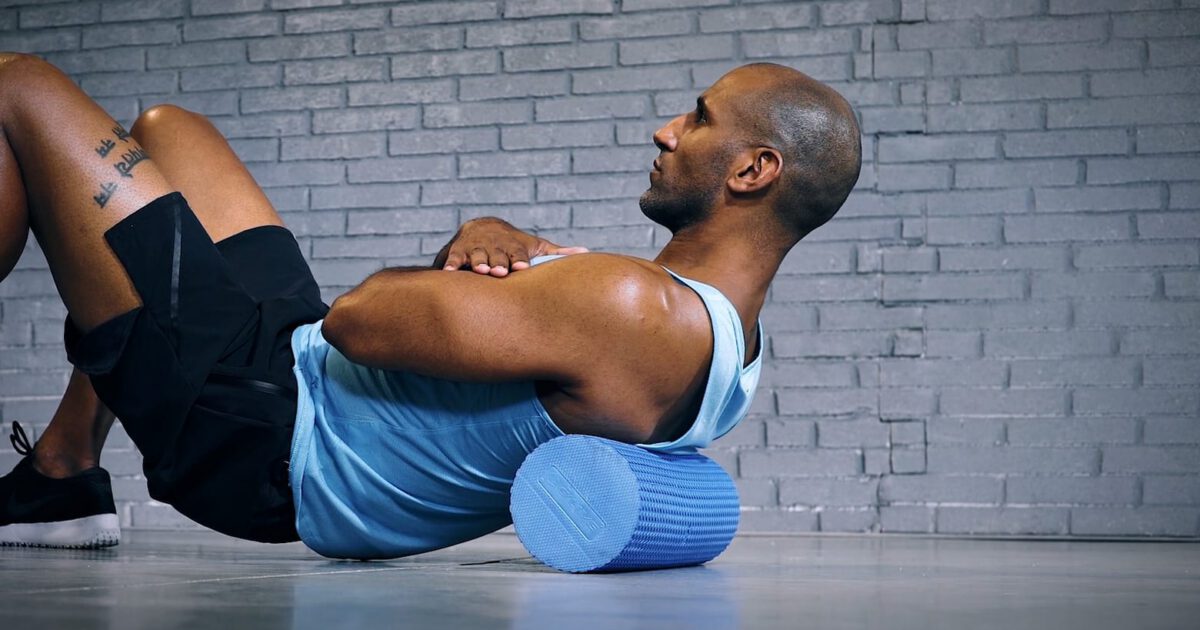WHAT
The foam roll for the upper back is an essential mobility exercise for the thoracic spine (upper back). Using the grid foam roller in a supine position, it targets the erector spinal, trapezius, and rhomboid muscles – helping to improve mobility of these important postural muscles. The foam roll for the upper back is a great warm up or cool down exercise for everybody, especially those who sit down a lot during work, or have stiffness in their upper back.
HOW
- To perform the foam roll for the upper back you have to lie on your back and place the foam roller horizontally at the point of the lowest ribs. Place the arms across the chest and hold each shoulder; alternatively (if it feels comfortable), you can place the hands behind the head.
- Lift the hips a few inches off the ground, and gently push the feet into the floor to begin rolling up the back. Roll slowly and gently, reaching deeply as you do. Roll up towards the top of the base of the neck, then slowly roll back down the spine.
- Repeat the movement slowly for a total of 30-60sec.
Training tip: if you find any tender points in the muscles, hang out for a few seconds, breathing slowly through the nose. Then continue rolling.
WHY
- The thoracic spine is the bridge between the low back and head/shoulders. Whereas the lumbar spine (low back) requires stability, the thoracic spine is a mobile structure. Prolonged sitting not only predispose us to slumped postures, but also cause stiffness (through lack of movement). Therefore regular mobility of this area is essential to the maintenance of a healthy spine.
- Mobility in the thoracic spine (and subsequent restoration of the natural spine curvature) will also allow for proper functioning of the scapulae (shoulder blades). If the thoracic spine becomes too stiff, the scapulae will move away from their natural position – usually in a forward direction, contributing to rounded shoulders. In this position, key postural muscles, such as the levator scapulae and upper trapezius can become strained and painful, placing excessive stress through the rotator cuff. This can become problematic when performing overhead movements.
- Any increases in upper back mobility should be coupled with both scapula mobility and lumbar stability, and where necessary, rotator cuff strengthening. This is important as stiffness/immobility in one area may be a compensatory pattern for excessive mobility in another area.
- Foam rolling of any kind is not only a great substitute for traditional static stretching – it also improves circulation to your muscles as part of a warm up or cool down.



